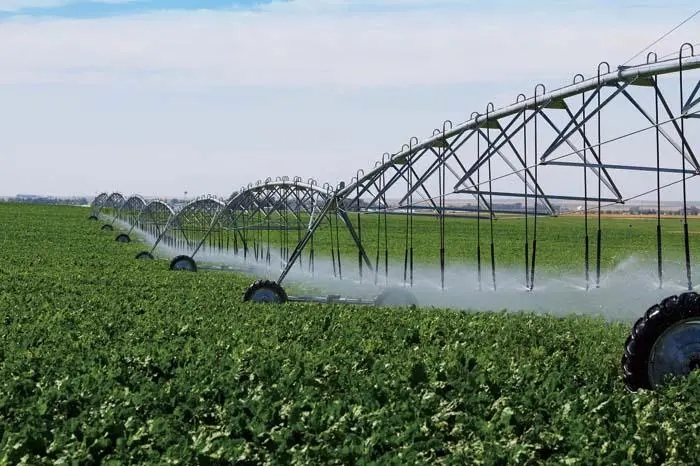

— Blogs —
—Products—
 Consumer hotline +8618073152920
Consumer hotline +8618073152920 WhatsApp:+8615367865107
Address:Room 102, District D, Houhu Industrial Park, Yuelu District, Changsha City, Hunan Province, China
Product knowledge
Time:2024-05-18 10:33:00 Popularity:463
Multilayer Soil Moisture Sensor data can be integrated with irrigation systems to enable precision irrigation, improve water use efficiency, and reduce waste. Below are the specific steps and methods of integration:
1. Data collection: Multilayer Soil Moisture Sensor collects real-time data such as soil moisture and temperature. These data can be transmitted to the data processing centre by wired or wireless means.
2. Data Processing and Analysis: The collected data needs to be processed and analysed to determine whether the soil moisture is suitable for crop growth. Typically, these data are compared with preset thresholds to determine if irrigation is required.

3. Irrigation decision-making: Based on the results of the analysis, the irrigation system can automatically make irrigation decisions. If the soil moisture falls below a set threshold, the irrigation system will be activated.
4. Automatic control: Once the irrigation decision is made, the irrigation system will automatically control the pumps, valves and other components to switch on the irrigation equipment and inject the right amount of water into the soil.
5. Feedback Adjustment: After irrigation is complete, the Multilayer Soil Moisture Sensor will continue to monitor the soil moisture to ensure that it remains within the appropriate range. If soil moisture remains below the threshold, the irrigation system will start again.
6. Remote monitoring and management: By transmitting the Multilayer Soil Moisture Sensor data to the cloud, users can remotely monitor soil moisture conditions and irrigation activities. This allows managers to access the data from any location via the internet and make remote adjustments to irrigation management.
In order to achieve these functions, the Multilayer Soil Moisture Sensor, the irrigation system, the data processing centre and the remote monitoring system need to be integrated together. This often requires the use of smart agriculture software and IoT technologies for data collection, processing, analysis and remote communication.
The following steps can be taken to better integrate Multilayer Soil Moisture Sensor with irrigation systems:
1. Hardware compatibility: Ensure that the output interface of the Multilayer Soil Moisture Sensor is compatible with the input interface of the irrigation system. For example, if the Multilayer Soil Moisture Sensor provides an RS485 digital output, then the irrigation system needs to have a corresponding RS485 interface to receive the data.
2. Unified communication protocols: The Multilayer Soil Moisture Sensor and the irrigation system need to use the same communication protocols so that data can be transferred seamlessly. If the two are not compatible, a data converter or repeater may be required to handle the data format and signal conversion.
3. Standardised data interfaces: Establishing standardised data interfaces allows the Multilayer Soil Moisture Sensor to transmit data to the irrigation system in a uniform format for back-end processing and decision-making.
4. Integrated control system: Establish an integrated control system that receives data from the Multilayer Soil Moisture Sensor and automatically controls irrigation system on/off and flow rates based on that data. This typically requires the use of a central processing unit (CPU) or microcontroller to perform the logic control.
5. Software Integration: Develop or use an existing smart agriculture software platform that can receive data from the Multilayer Soil Moisture Sensor and provide a user interface for managers to view and adjust irrigation strategies.
6. Remote Access and Control: Connect the Multilayer Soil Moisture Sensor to the irrigation system via the Internet, allowing managers to monitor and control the irrigation system through remote access to the software.
7. Feedback Loop: A feedback loop is established so that the operation of the irrigation system can influence the data collection of the Multilayer Soil Moisture Sensor and vice versa. For example, after an irrigation operation, the Multilayer Soil Moisture Sensor can re-collect soil moisture data to verify irrigation effectiveness and adjust future irrigation strategies.
8. Testing and optimisation: After integration, field tests are performed to ensure that the system is working as expected. Parameters and strategies are adjusted accordingly to achieve optimal irrigation results and water use efficiency.
The above measures can ensure smooth integration between Multilayer Soil Moisture Sensor and the irrigation system to achieve intelligent and automated irrigation management, thus improving agricultural productivity and saving water resources.
The integration of Multilayer Soil Moisture Sensor data with the irrigation system enables precise irrigation based on actual soil moisture conditions, avoiding over- or under-irrigation, thus increasing crop yields and water utilisation efficiency, and reducing resource wastage.
Multilayer Soil Moisture Sensor is widely used in agriculture, forestry, environmental protection, water conservancy, meteorology and other industries. It is also suitable for water-saving irrigation, flower horticulture, grass pasture, soil quick test, plant culture, greenhouse control, fine agriculture and other fields to meet the needs of scientific research, production, teaching and other aspects.
NBL-S-TMM-Tubular-Multi-Layer-Soil-Moisture-Sensor-Meter.pdf
Related recommendations
Sensors & Weather Stations Catalog
Agriculture Sensors and Weather Stations Catalog-NiuBoL.pdf
Weather Stations Catalog-NiuBoL.pdf
Related products
 Combined air temperature and relative humidity sensor
Combined air temperature and relative humidity sensor Soil Moisture Temperature sensor for irrigation
Soil Moisture Temperature sensor for irrigation Soil pH sensor RS485 soil Testing instrument soil ph meter for agriculture
Soil pH sensor RS485 soil Testing instrument soil ph meter for agriculture Wind Speed sensor Output Modbus/RS485/Analog/0-5V/4-20mA
Wind Speed sensor Output Modbus/RS485/Analog/0-5V/4-20mA Tipping bucket rain gauge for weather monitoring auto rainfall sensor RS485/Outdoor/stainless steel
Tipping bucket rain gauge for weather monitoring auto rainfall sensor RS485/Outdoor/stainless steel Pyranometer Solar Radiation Sensor 4-20mA/RS485
Pyranometer Solar Radiation Sensor 4-20mA/RS485
Screenshot, WhatsApp to identify the QR code
WhatsApp number:+8615367865107
(Click on WhatsApp to copy and add friends)